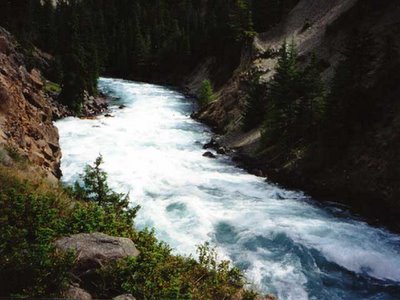So this is how it starts

What once starts as a thought of something big and out of reach, it becomes more real once you share it with someone. I shared this thought with Allison (girlfriend) the other day. When I first arrived in Idaho last spring I was truly blown away, the Sawtooth Mountains made me breathless. So it was in this moment that I knew what I wanted to do. I wanted to kayak the Salmon River from its source near Stanley, ID all the way to the ocean on the Oregon/Washington border. At the time I had no idea what that would entail.
I now know that after losing about 6,000 in elevation and nearly 900 miles of paddling, the trip would be in the books. WOW! Not your regular day trip down the French Broad, nor is it a quick 6 day trip on the Main Salmon. This is serious commitment.
 I spent a couple weeks in British Columbia, at the end of the summer, on the Chilko River and it was there that I realized my respect for wild salmon. These fish are absolutely amazing their strength and courage is unmatched in the animal kingdom. Seeing a sockeye salmon upswimming a class V rapid is a sight to see and one to never be forgotten. Little did I know it then but this is when another idea spawned in my head.
I spent a couple weeks in British Columbia, at the end of the summer, on the Chilko River and it was there that I realized my respect for wild salmon. These fish are absolutely amazing their strength and courage is unmatched in the animal kingdom. Seeing a sockeye salmon upswimming a class V rapid is a sight to see and one to never be forgotten. Little did I know it then but this is when another idea spawned in my head.I could do this trip and help raise money to restore wild salmon runs and hopefully make a difference before it is too late.
Why is this trip important and why salmon?
First off salmon are anadromous, meaning they are born in freshwater streams and lakes. When they have grown enough and genetics take over they go to the ocean, going tail first, allowing the spring-time snowmelt to rush them to the ocean. As they approach the ocean their bodies undergo a chemical and physical change so their bodies can deal with salt water instead of fresh. They spend from 1-7 years swimming the ocean currents fattening up for the eventual day, when something inside them tells them to go back 'home.' It is assumed that they have an acute sense of smell and can smell the river where they were born. Again they undergo a chemical and physical change back to freshwater. Making it back to where they were born, hopefully they find a mate and spawn, to bring on another generation of salmon. Steelhead are similar to salmon, except they are an anadromous trout.
This trip is important due to the sensitive nature of salmon migration. This journey will retrace an ancient salmon migration path that is on the verge of being extinct. There are many factors concerning the extinction of certain species of salmon and steelhead, such as dams, fish hatcheries, and streamside erosion. In the 1950's there were an estimated 4,000 sockeye salmon returning to Redfish Lake each year. In 2005, 6 sockeye made it back on their 900-mile journey from the Pacific Ocean, up the Columbia, Snake and Salmon River systems, passing numerous damns along the way. Wild Salmon, especially Snake River Salmon are in dire need of additional support that they are not getting. Today 1/10 of 1% of salmon spawned in Idaho makes it back to spawn. Through this trip, as well as the photographs, magazine and newspaper articles that come from it we can raise awareness and money to educate the public, leading to political change. The potential implications could lead to policy change, dam removal and the return of wild salmon and steelhead to sustainable levels.

0 Comments:
Post a Comment
<< Home